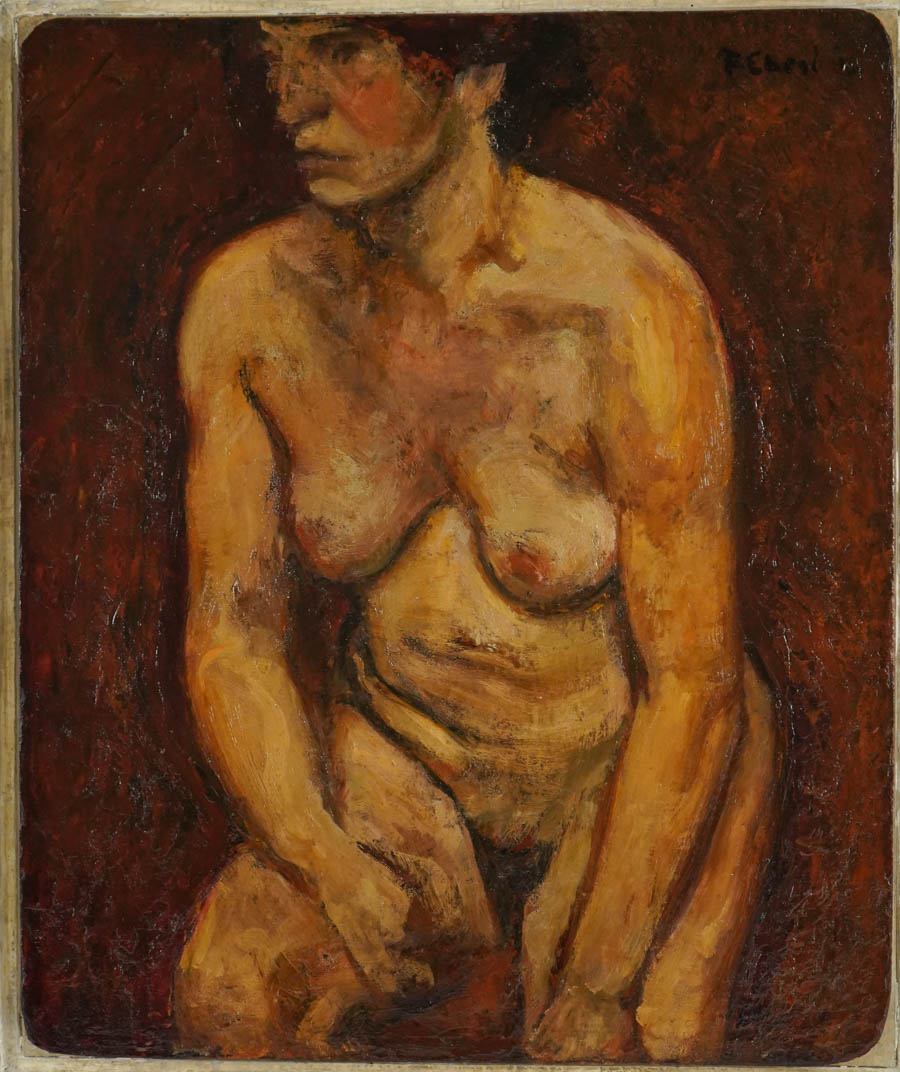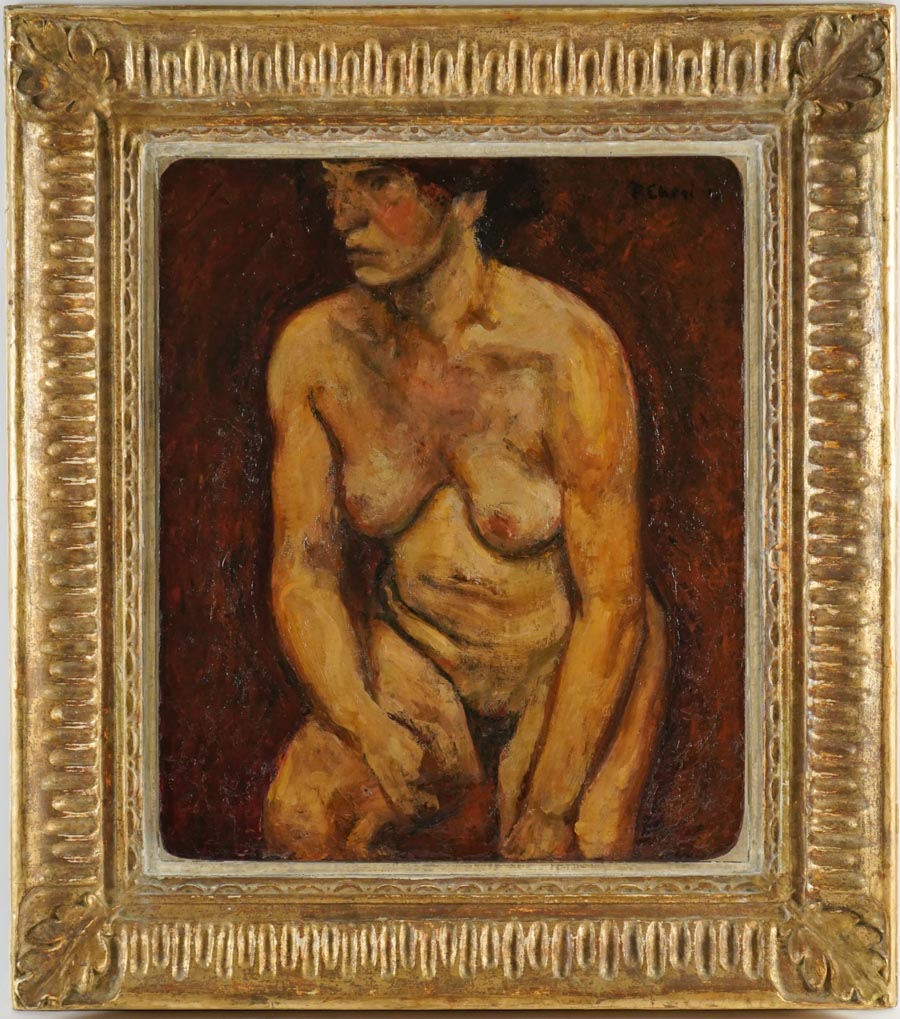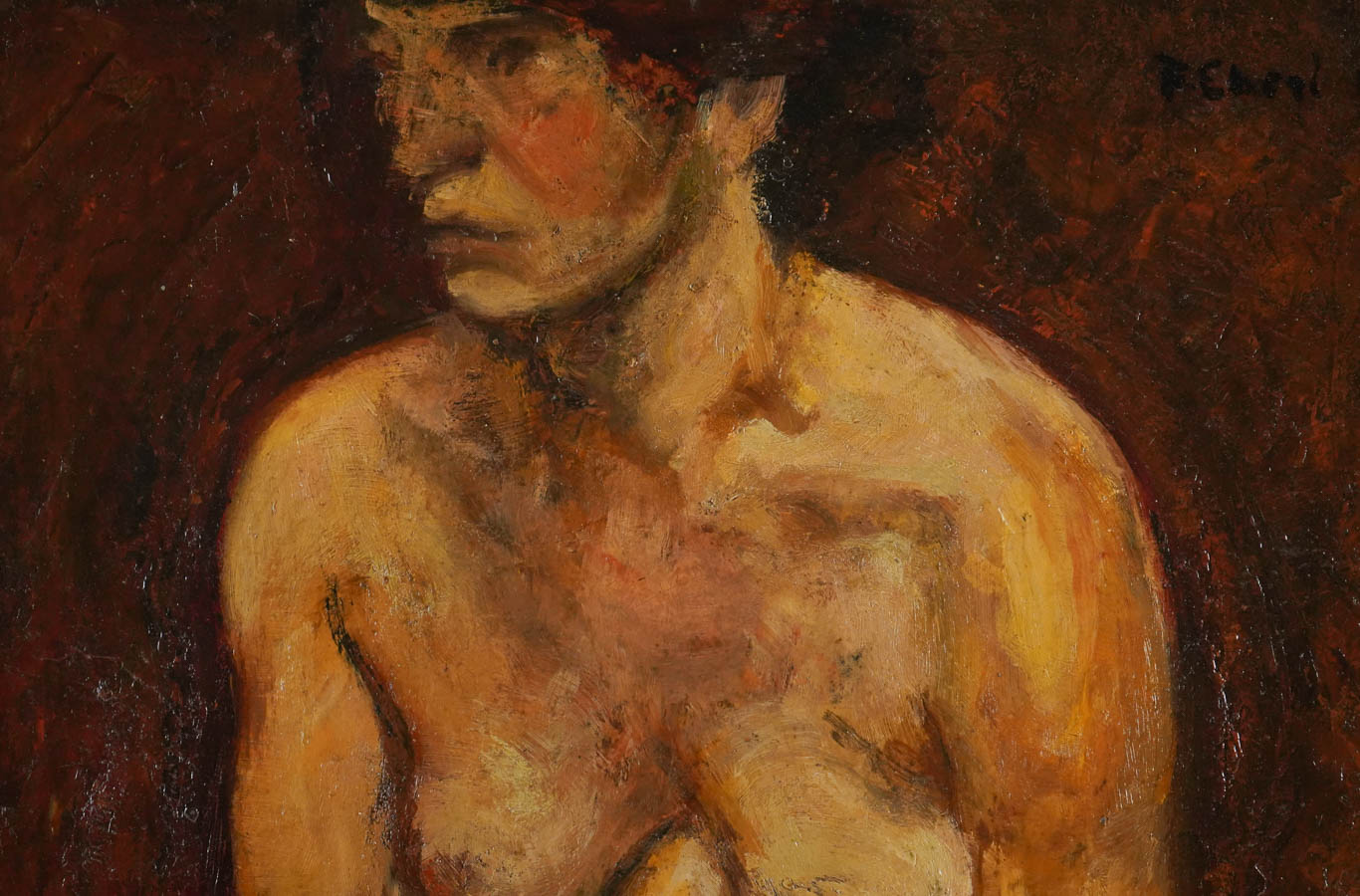François Zdenek Eberl
A female nude by François Eberl from 1913. A vigorous, expressionist early work in rich shades of dark red
Oil on cardboard
Signed and dated 1913 upper right
Dimensions: 54.5 x 45.5 cm
With frame: 78.5 x 69.5 cm
Price: 2700 euros
“His daughters are sad, pensive, resigned; he senses the poetry of misfortune and renders it, a difficult task, without making his painting boring or monotonous” René Édouard-Joseph
A work of youth
Francois Eberl arrived in Paris in 1911 and began exhibiting in 1913, the date of our painting. It was the eve of the First World War when he painted this picture.
A vigorous expressionist painting
Bibliography
Like Toulouse-Lautrec, he wanted to represent all the women, whom Arsène Alexandre, critic, calls his “Mona Lisa of sidewalks”. He gives charisma, elegance and nostalgia to prostitutes, their black eyes recall those of Marie Laurencin (famous French painter, friend of Modgliani and Eberl).
After studying at the Beaux-Arts in Prague in 1905, he traveled to Europe (Munich, Amsterdam, Stockholm), then moved to Paris in the Montparnasse district in 1911. In Paris, the young artist soon exhibited at the most famous salons. In 1919, he stayed in Montmartre and met the Bohemian painters: Pablo Picasso, Maurice Vlaminck and Amedeo Modigliani. He maintains a friendship with each of them. His art is promoted by the Montmartre critical circle of Francis Carco, François Dorgelès and Pierre Mac Orlan.
In the 1920s, Eberl’s career took a decisive turn. It is shown and requested, the dealer and gallery owner Berthe Weil exhibits it. He became a member of the Salon des Artistes Indépendants, was admitted to the Freemason lodge Thélème which he decorated years later, in 1956. He acquired French nationality around 1920, was made a Knight of the Legion of Honor in 1928.
Eberl goes beyond the limits of his profession as a painter: he organizes a few exhibitions (“French art”, Stockholm) and supports his friends by putting them in contact with international collectors. The glamor of the 1920s gained its rhythm of life, the painter was one of the chic and eccentric Parisian community. Eberl surrounds himself with exotic animals (a lion, a crocodile), he drives and wins races for Bugatti. It was at this time that he established his second residence in Monaco.
War rings in the heart of Europe; Eberl struggles with his protesting nature as a painter, paints “Kulturkampf” to denounce the Nazi regime, retires to Monaco and joins the Resistance. He did not return to his Paris studio until the end of the war, remarried and settled back into the bourgeois daily life he shared between Paris and Monaco. He was active in Monaco, organizing exhibitions and co-founding a Salon in 1954.
Bibliography
Museums
Paintings have been shown in numerous exhibitions: at the Montreal Museum of Fine Arts, for “De Caillebotte à Picasso” in 2006; in a solo exhibition at the Montmartre Museum in 1987 and 2002; in Bergamo, Italy, for “Les artistes des Salons parisiens 1850-1950”.




